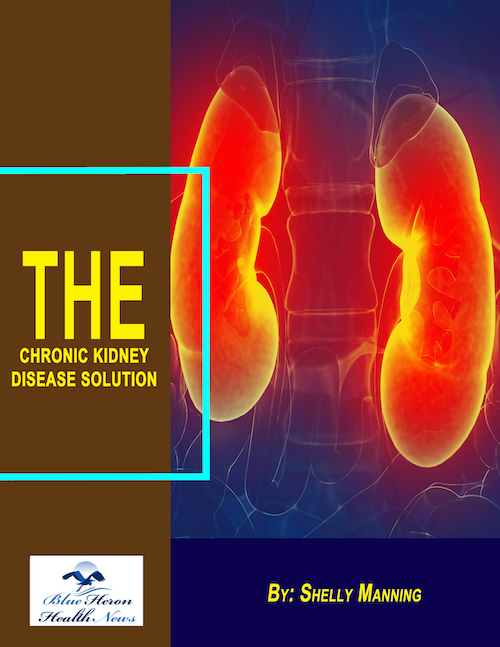
The Chronic Kidney Disease Solution™ By Shelly Manning The information provided in this write-up about The Chronic Kidney Disease Solution, a guide, helps in motivating people to get rid of the chronic problems on their kidneys without using any harmful methods. It eliminates your kidney problem by focusing on the poor health of your gut and inflammation.
What is a fistula, and how is it used in dialysis?
A fistula is a surgically created connection between an artery and a vein, typically in the arm, that is used to facilitate hemodialysis treatment for individuals with kidney failure. Here’s an explanation of what a fistula is and how it’s used in dialysis:
1. What is a Fistula?
- A fistula is a surgical procedure that involves joining an artery (a blood vessel that carries blood away from the heart) to a vein (a blood vessel that returns blood to the heart). The most common type of fistula used for dialysis is an arteriovenous (AV) fistula, created in the arm.
- The purpose of this connection is to allow for the easy and efficient removal and return of blood during dialysis. When blood flows from the artery into the vein, the vein becomes larger and stronger, making it easier for needles to be inserted and blood to flow freely for dialysis.
2. How the Fistula is Used in Dialysis:
- Dialysis access: The fistula is used as an access point for hemodialysis, a procedure that filters waste products and excess fluids from the blood when the kidneys are no longer functioning effectively.
- Blood flow during dialysis: During hemodialysis, two needles are inserted into the fistula: one for removing blood from the body to be filtered through the dialysis machine and another for returning the cleaned blood back to the body.
- The arterial needle removes the blood from the body and sends it to the dialysis machine for filtration.
- The venous needle returns the filtered blood back into the body.
- Improved blood flow: Because the fistula provides a larger and stronger vein, it allows for greater blood flow, which is necessary for efficient dialysis treatment.
3. Advantages of Using a Fistula for Dialysis:
- Longer lifespan: AV fistulas are the preferred method of dialysis access because they have the longest lifespan compared to other access options, such as grafts or catheters. Fistulas can last for many years with proper care.
- Lower infection risk: Fistulas are less prone to infections than other dialysis access sites. Since they are made from the patient’s own blood vessels, there is no foreign material involved, which reduces the chance of infection.
- Better blood flow: AV fistulas provide a high blood flow rate, which is essential for efficient dialysis. This helps ensure that the dialysis process removes waste products and fluids from the body effectively.
4. How the Fistula is Created:
- Surgical procedure: The procedure to create a fistula is typically performed under local anesthesia and involves connecting an artery (usually in the forearm or upper arm) to a nearby vein.
- Healing and maturation: After the fistula is created, it takes time to mature. The vein needs to grow stronger and larger to handle the blood flow required for dialysis. This process can take several weeks to a few months, and during this time, the patient may need to use another form of dialysis access, such as a catheter, until the fistula is ready.
5. Potential Complications:
- Maturation issues: In some cases, the fistula may not mature properly, meaning it doesn’t become large or strong enough to use for dialysis. If this happens, the patient may need a graft or catheter instead.
- Stenosis or clotting: Over time, the fistula can become narrowed (stenosis) or clot, which can reduce blood flow and require treatment such as angioplasty or thrombectomy (removal of the clot).
- Infection: While less common than with other access sites, infections can still occur in the fistula or surrounding tissue.
6. Alternatives to Fistulas for Dialysis:
- Dialysis grafts: If a fistula is not a good option due to poor vein quality or other factors, a graft (a synthetic tube) may be used to connect the artery and vein. Grafts are used when a fistula cannot be created or if the fistula fails.
- Dialysis catheters: A catheter is a tube that is inserted into a large vein, typically in the neck, chest, or groin, and is used for dialysis. Catheters are typically used for temporary dialysis access, but they have a higher risk of infection and are less efficient than fistulas.
Conclusion:
An arteriovenous (AV) fistula is a surgically created connection between an artery and a vein used to provide access for hemodialysis. It allows for efficient blood flow during dialysis, offering benefits such as better longevity, lower infection risk, and optimal blood flow. It takes time to mature after surgery, and while it is the preferred method for dialysis access, other alternatives like grafts or catheters may be used if a fistula is not suitable.
The Chronic Kidney Disease Solution™ By Shelly Manning The information provided in this write-up about The Chronic Kidney Disease Solution, a guide, helps in motivating people to get rid of the chronic problems on their kidneys without using any harmful methods. It eliminates your kidney problem by focusing on the poor health of your gut and inflammation.